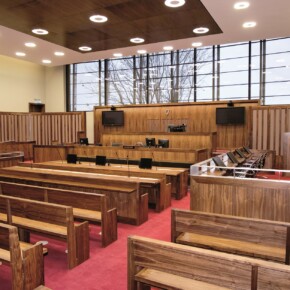Controversial Drumcondra SHD gets approval despite criticism
Gary Ibbotson 18 Nov 2021
The decision of An Bord Pleanála to grant planning permission for a Strategic Housing Development (SHD) on the grounds of Holy Cross seminary in Drumcondra has been severely criticised by local politicians.
The €602m, 1,592 build-to-rent apartment complex on the grounds of Clonliffe College is being progressed by Hines and has been the subject of controversy since news of the project came to light.
Dublin City Council chief executive Owen Keegan wrote to An Bord Pleanala in September, recommending that the development be turned down.
Keegan criticised various facets of the project, including the build-to-rent aspect, the number of studio apartments proposed and the lack of sunlight that the complex will receive.
In his letter, Keegan said that it is “critical” a development of this size “should not be purely for rental, given the desire and need for local residents and potentially people from outside the area to purchase their own home.
Of the 1,614 units proposed, over 70% are either studio apartments or one-beds, which the chief executive said was “alarming.”
“It is considered the scheme is a major missed opportunity to create an integrated, mixed income, mixed ownership and sustainable new community with a full range of apartment types and sizes,” he said.
Despite this, the development was given the green light by the planning board last week, with local TDs voicing their concern on the matter.
Social Democrats TD for the area Gary Gannon said: “the scale of this development, nearly 1,600 units, is unprecedented.
“These apartments will never be available to buy.
“Like approximately 70 percent of the housing units in Dublin that have been granted planning permission since 2018, they will be build-to-rent,” he said.
“Young people and families, who have hopes of buying an apartment and putting down roots in the community, will be unable to do that at Holy Cross.
“Instead, the accommodation will be disproportionately cramped studio and one-bed rental accommodation.
“In fact, 70 percent of the units will be one-bed or smaller.”
Local Independent councillor Nial Ring was also critical of ABP’s decision, saying that local residents feel they have been “ignored” by the authority.
“An Bord Pleanála not only ignored the vast majority of submissions which opposed the development, but also ignored the report of the chief executive of Dublin City Council who, among many other comments, described the development as “alarming” and actually requested that the 18-storey block be removed entirely,” he said.
“It does beg the question – who runs the city?
“To add insult to injury An Bord Pleanala also communicated a point blank refusal to the many requests for an oral hearing on the planning application.”
Ring said that ABP’s reply to local residents requesting the hearing consisted of “arrogantly pointing out” that the decision to hold an oral hearing was at its “absolute discretion” and that there are “exceptional circumstances requiring urgent delivery of housing as set out in the Action Plan for Housing and Homelessness” he said.
The approval of the scheme was in contravention of the local area plan, due to its height and density.
Deputy Gannon said that “in its decision, the board conceded the height and density breached the development plan but said that was overruled by ministerial order.
“Clearly, the granting of this permission, in the face of so many objections and in contravention of the development plan, has serious implications for development in the rest of the city.
“It means that even those SHDs which clearly breach the city development plan, are likely to be given the green light.
“The SHD process, which the government itself has said is not working to deliver homes, was due to be phased out as early as this autumn.
“Regrettably, that deadline was postponed to 2022, for reasons that have never been explained by the government.
“If we have learned one thing since SHDs were introduced, it is that they do not deliver homes. What they deliver is bumper profits for developers and investment funds.”










